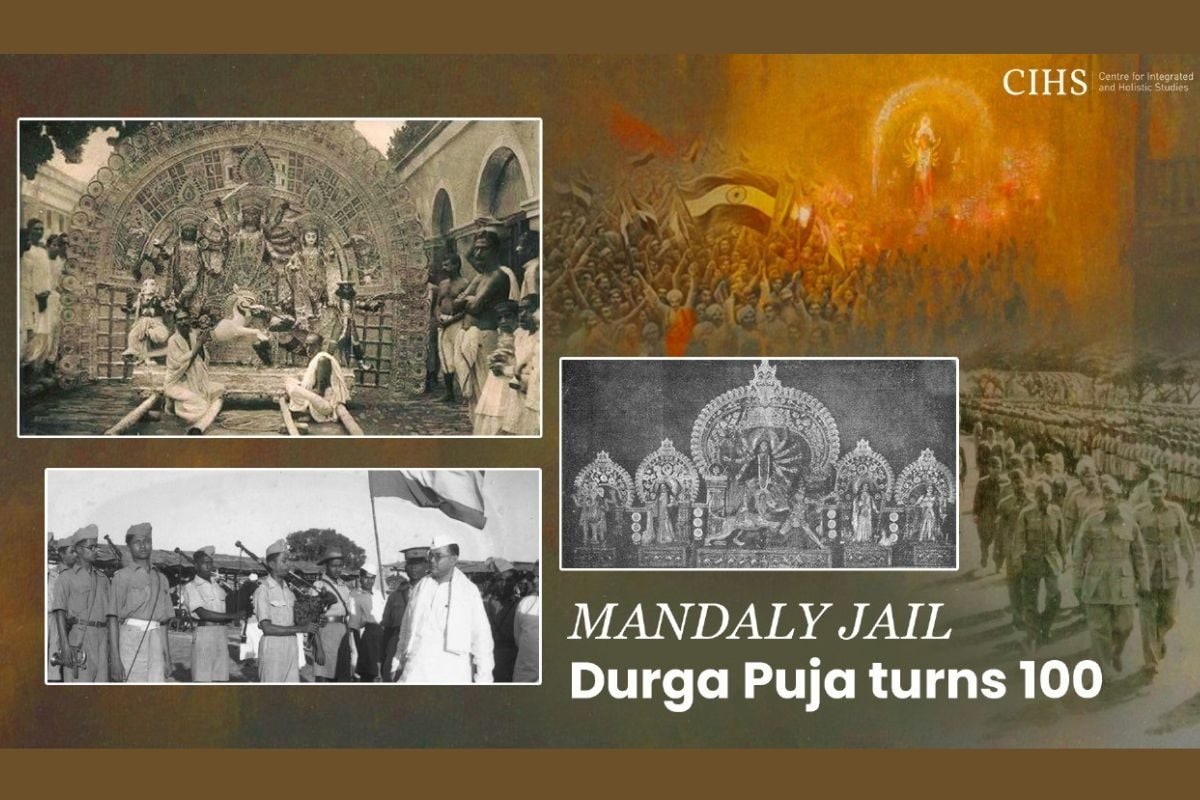Subhas Chandra Bose channelled Durga Puja’s spiritual energy to fight British occupation and secure complete independence for India
Navratri and Durga Puja are more than mere religious events. They represent enduring spirit of justice over tyranny, truth over lies and victory over adversity. It transcends religious, social and cultural boundaries, resonating with diverse communities across India and the world. The nine-day festival of Navaratri (Durga Puja) celebrates Goddess Durga’s (a symbol of divine feminine power, strength, and protection) nine manifestations or forms, each of which represents different aspects of her power.
Durga Puja has historically been a celebration of culture along with an occasion for socio-cultural activities. Following Nawab Siraj-ud-Daula’s defeat in 1757, Raja Nabakrishna Deb’s big puja at Sovabazar Rajbari in 1790 highlighted the festival’s prima donna position with Bengalis and Hindus globally.
The first “barowari” or community puja was arranged in Hooghly by 12 friends from Guptipara. This helped democratise puja holidays and served as inspiration for open festivities.
Spiritual gurus acknowledged Durga Puja as unifying power as well. When Swami Vivekananda, Subhas Chandra Bose’s spiritual mentor, held Durga Puja at Belur Math in 1901, he combined religious observance with re-establishing the essence of Bharat, i.e. Sanatan Dharma. Bipin Chandra Pal held ‘Swadeshi Puja’ festival in 1905, which led to promotion of locally made items and oppose British imperial rule. Later on, the festival advocated boycott of imported goods.
In 1908, Aurobindo Ghosh used Durga puja festivities to inject life to secure Indian independence from British occupation. Spiritual energy of the celebration was redirected to enroll committed soldiers for undertaking independence movement.
Bose stood out among these historical figures for his distinctive fusion of nationalism with spirituality. Beyond devotion, Bose’s active role in Durga Puja celebrations served as a symbol of resistance and struggle against colonial oppression. This was akin to Shri Ganesh puja festivities in Maharashtra and Gujarat that turned into breeding ground for independence movement warriors.
Bose’s leadership of Baghbazar Sarbojanin Durga Puja from 1928 lent nationalistic fervour to the celebration, taking firm tiny steps to larger liberation campaign. Due to his influence, Swadeshi movement got fillip during puja festivities and promoting indigenous industries and self-reliance.
Bose’s most remarkable contribution came in 1925 during his detention at Mandalay Jail in Burma. Like the renowned revolutionaries Bal Gangadhar Tilak and Lala Lajpat Rai, Bose turned his spiritual practice into social engagement. Durga Puja celebration in Mandalay jail was not just an act of faith; it was a forceful statement against barbarous British colonial occupation.
Bose persuaded the British government to support inmates’ festival in spite of the authorities’ initial opposition, signifying human spirit’s tenacity in the face of injustice.
His deep confidence that Durga, the divine mother, would visit the inmates and lessen their pain was conveyed in a letter he wrote to Basanti Devi, the wife of his mentor, Deshbandhu Chittaranjan Das. The Mandalay Puja was a significant act that turned the prison into a hallowed place where the fight for freedom was combined with spiritual liberation.
Bose’s determination to hold the festival notwithstanding extreme circumstances demonstrated his conviction that it was not limited to religious celebration, but played significant role in shaping India’s future.
Bose continued with the custom by celebrating ‘Azad Hind Puja’ in 1942 and emphasised that Goddess Durga symbolised not only the victory of good over evil, but the struggle for Indian independence. In a letter to his mother, Bose said, “Bharat Varsha is God’s favorite place for incarnation and holy land where God himself would appear time and again, to teach humanity the way of righteous living.”
As we commemorate the 100th year of Durga Puja at Mandalay Jail, let’s pay tribute to Bose’s spirit of resistance and tenacity as well as festival itself.
Durga Puja has become an enduring reminder that the pursuit of justice and freedom may transcend even the most severe restrictions and that one might seek the blessings of the divine mother in the unlikeliest of places — even a colonial prison.
The fact that Durga Puja is now recognised by UNESCO as an “intangible cultural heritage” is evidence of its widespread significance; and Indian government’s Ministry of Culture was instrumental in gaining this status.
(Article sourced from the Centre for Integrated and Holistic Studies. The author is Principal of Kolkata-based Jogesh Chandra Chaudhuri College. He teaches business management)

